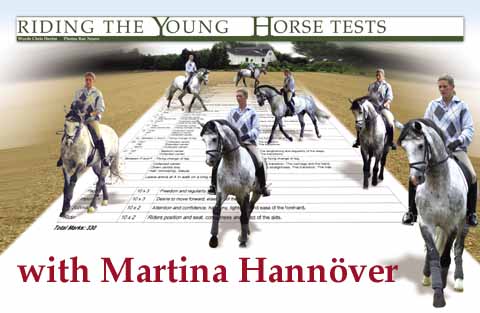 Martina Hannöver, working on the correct principles of training the young horse…
Martina Hannöver, working on the correct principles of training the young horse…
“There is no secret, the work with the young horses is always the same. I am trying to make them go straight and go forward, with the hind legs in the same line as the front legs. They must learn to move over the body into the hand, they must learn that the rein and the bit are not awful, they must be happy to make the contact, if you have nothing in your hand, you can’t give a halt, it is like a car, if it is not going forward you cannot use the brake.”
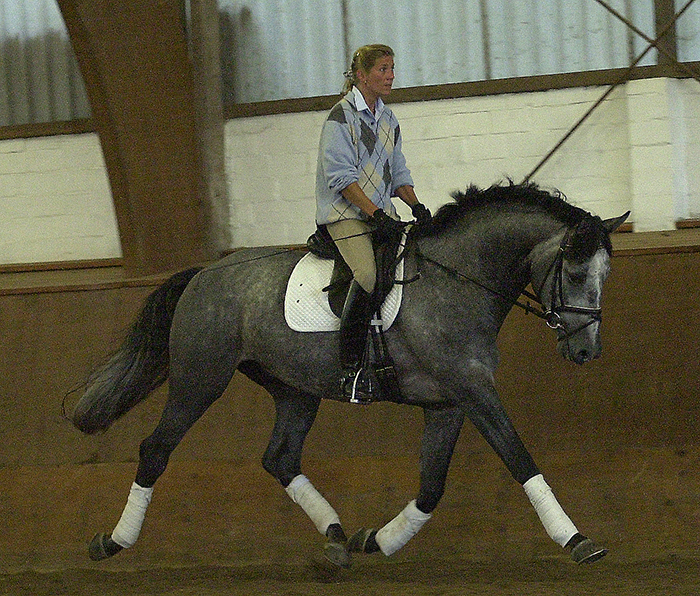
“Here’s how I’m trying to teach the younger horses. Deep, even a little behind the vertical at times. It depends on the horse, some horses feel more comfortable and secure if they are a little bit behind the vertical, but when they are really working into the hand, that is when they are truly through.”
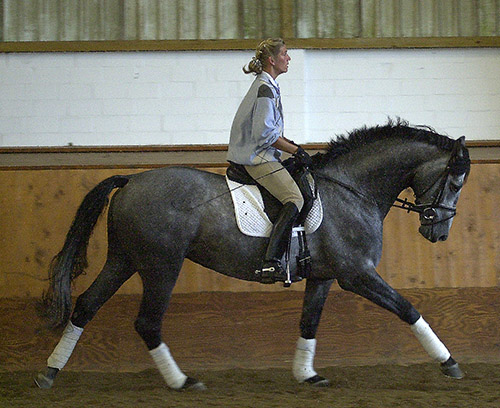
The work for the young ones is repetitive and simple:
“They do walk, trot and canter. The exercises they do depend on the horse. Yesterday with one horse, I tried walk / canter, canter/ walk and there I just want the horse to feel comfortable to learn my aids and understand them. It doesn’t matter too much where the head is, it shouldn’t be too far out because then it goes against your hand and the bit, and then the horse can be uncomfortable in the back and they don’t want to go forward any more.”
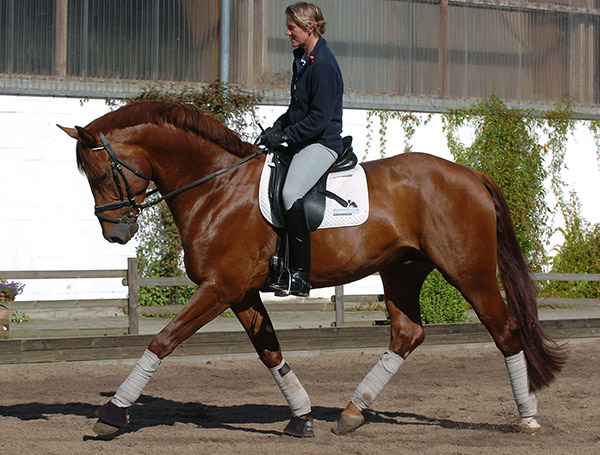
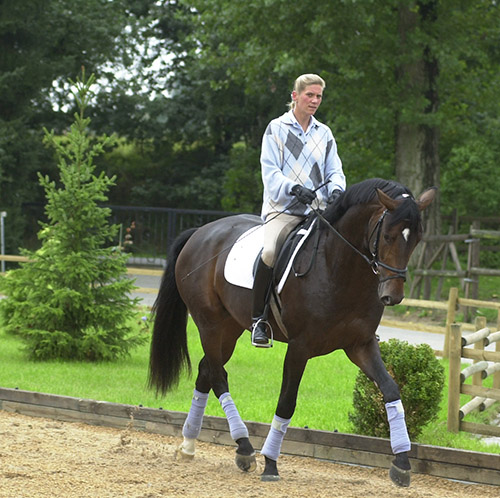
“I always use shoulder fore with them to make them straight. I change around a lot – straight, then circle, then straight, then circle. Not just going along the long side, three or four canter strides then into circle, so they learn to go straight, and to bend. It is much easier for a Grand Prix horse to know the zig zag if they learn from the beginning how to get straight on the leg, on the soft rein, and to bend and then go straight.”
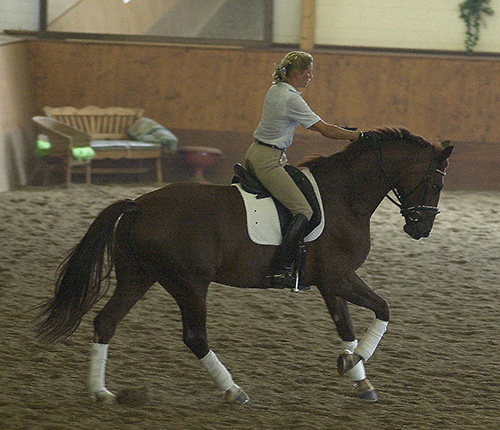
“Keep changing what you do. So many horses just get used to going forward along the long side that they don’t carry the weight on their hind legs any more. Then I go back to the bending because it is easier to get them to carry the weight on a circle, that way they learn without getting afraid, to listen and to wait, and to come into a more collected canter.”
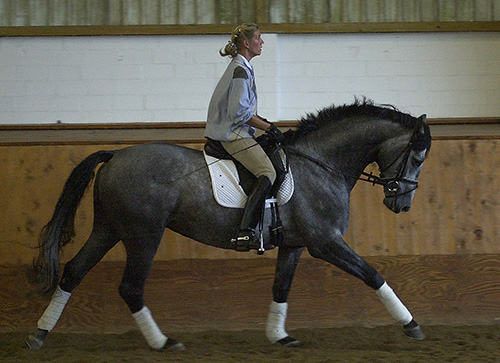
I noticed that you were testing by softening or giving away the inside rein to make sure the horse was accepting outside contact?
“It is always the ‘telephone’, the outside rein, that’s how we talk to our horses.”
And lateral work?
“I work on half pass without bend – leg yield – so that they get free in the shoulder, and then when they get older it is easy to teach them a flying change because they wait. Younger horses when you train them in half pass, they can just know the leg as an aid to push forward or to control, but not to push sideways. So you end up with them too forward, too much in your hand, and you can’t ride a nice half pass with them, and you can’t teach them a flying change. With this work, by the time the horses are seven they are really strong in the back, not stiff, but strong in the muscles behind your saddle.”
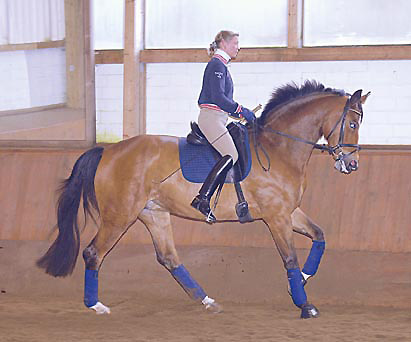
Do you teach counter canter to the young ones?
“I try, if they learn it easily, but some horses they have such a big canter that I don’t push them into this exercise, because I don’t want a horse that spends its whole life at lower level, I want a horse that goes on to Grand Prix level.”
When do you start playing with the flying changes?
“Whenever they offer them to me. If the flying change is not really against me, then it is alright. If they just make a change, they are balanced and they just want to do the right thing, then don’t punish them for that.”
What impression are you trying to make with a five-year-old horse in a test?
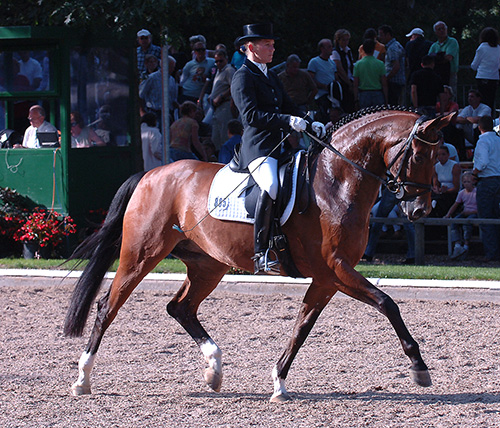
“That they are really carrying themselves. That they are straight – I saw many horses at the Bundeschampionate that were not straight. In my opinion that is one of the first things, ride your horse forward and keep it straight, that’s the most important point of riding. At the five year old level you can really try to make a nice halt, nice circles – again, coming really straight with the hind legs into the front legs, keep the rhythm all the time, give them the reins in überstreichen, that’s what the judges want to see. The correct bending on both hands, in the corner, on the circle. I think it is a very good test.”
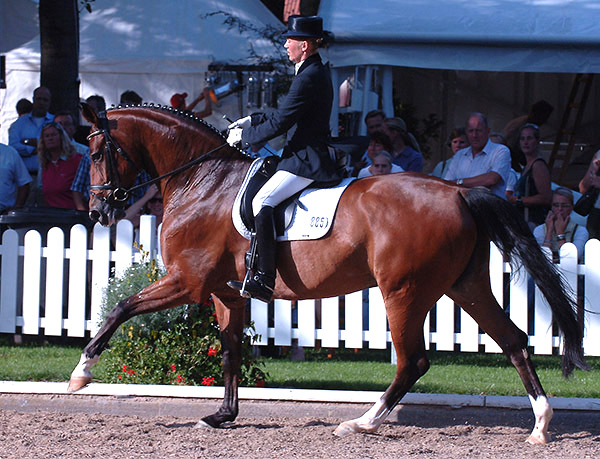
“Horses that are really calm can do the five year old test, not too much pressure – if they have walk, trot and canter, that’s the most important thing.”
more follows
“Remember though that some horses that might be a little bit too hot for the five-year-old test can make good Grand Prix horses when they are older – it’s like people, look at me…”
What is important to get a really good shoulder in?
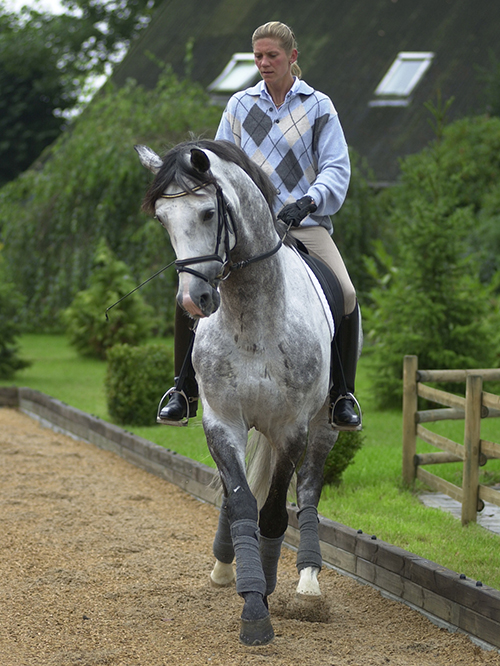
“That they have the right bend, they have been correctly ridden into the corner, that they have been ridden really straight before, they listen to your inside leg, and remember not to just take the neck to the inside, you always have to get the outside shoulder into the arena. If the bending is not so good at home, you can start with a volte in the corner, but you always must remember to get the horse straight by using the shoulder in. You ride shoulder in to make the horse move straight on one track. Even on the circle, you try to keep the horse on one track, they bend in the neck and in the ribs but they are ‘straight’ even if they are bent, they follow on two tracks.”
“It’s pretty normal for the young horses when you are teaching them shoulder in, that they get a little backward in the movement, and lose a bit of the rhythm – first you have to make them secure in the exercise, so that they listen. Then you can go back to a nice trot on the next short side and try to keep that trot rhythm in the next shoulder in. It goes slowly, step by step by step. First they should learn to listen to my aids and what I want from them, so that they understand, then I can come back to the rhythm. They have to get balanced, and some horses are not so naturally balanced, and you have to work on it.”
“Sometimes in the test the horse is not listening to the legs so well, but if you use the legs too much, the more you work with your legs, the more you will disturb the horse. So you try in the warmup – a little more working on the hind legs and then in the test you can do a little bit less and the horse is happy. I don’t ask more in the test than I ask at home, or ask in the warming up. If anything I ask a little less in the test, so that they think it is easy.”
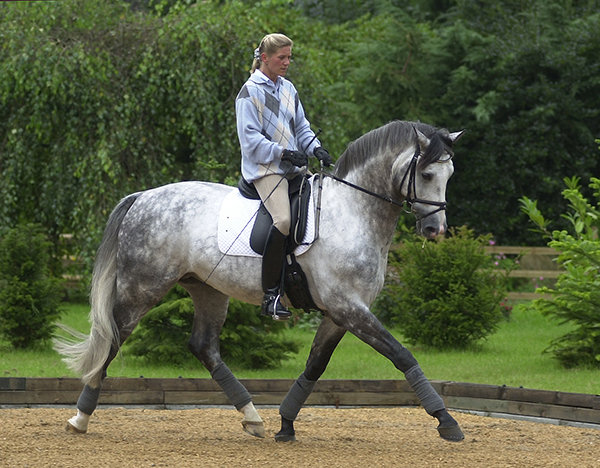
How do you develop the medium trot?
“I don’t have many horses that really have a great natural big trot. The Rubinsteins, often they don’t have such a big natural extended trot, you really have to work on their muscles to make them strong in the hindlegs so that they can carry themselves. To get the medium trot the movement must come forward, and uphill, with the horse carrying himself on the hindlegs, then the nose is up, the neck is up, and you really see a nice front leg without just pushing the horse up with the hands. The horse must be strong to be able to carry itself in a nice medium trot.”
“With some horses, canter work is much easier for them, when they are five or six, you can ride collected canter, working a little bit on travers, on the circle, on a volte, and you can make the horse really strong in the hind legs – and then it is much easier for them in the trot.”
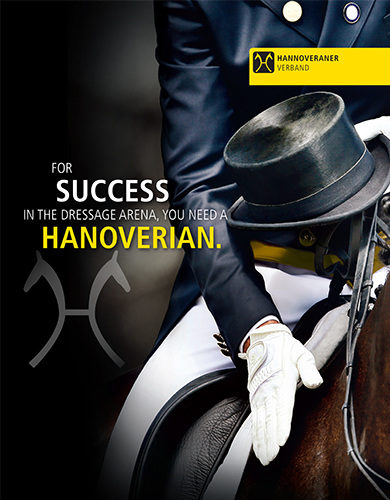
more training wisdom follows
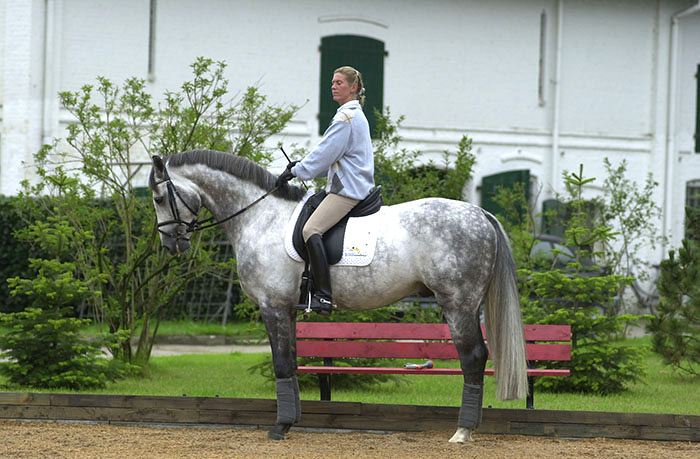
How do you get a square halt every time you stop?
“Whenever the horse is ridden, it must half square. It’s like young children sitting down to eat at the table, they know they must take the knife in the right hand and the fork in the left hand, they just know it, so they don’t have to ask every time. That’s the same as what I am doing with my young horses. They always have to stand with all four legs square, then they remember it in the test, it becomes automatic. When you stop just play around, a little bit with the whip, tap to square up the right hind leg. At first they stand like a cow, then they get more and more used to it. If the groom brings the horse into the arena for me to ride, she makes it stand square while it is waiting. When they put the horse under the solarium, they ask them to go in with slow diagonals backwards, it is much easier for them. Not teaching but playing, they’ve got to go backwards to go in the solarium so they try to go slow, not hectic, the groom lets them think about the diagonals…”
How do you train the medium walk – how do you get bigger movement in the walk?
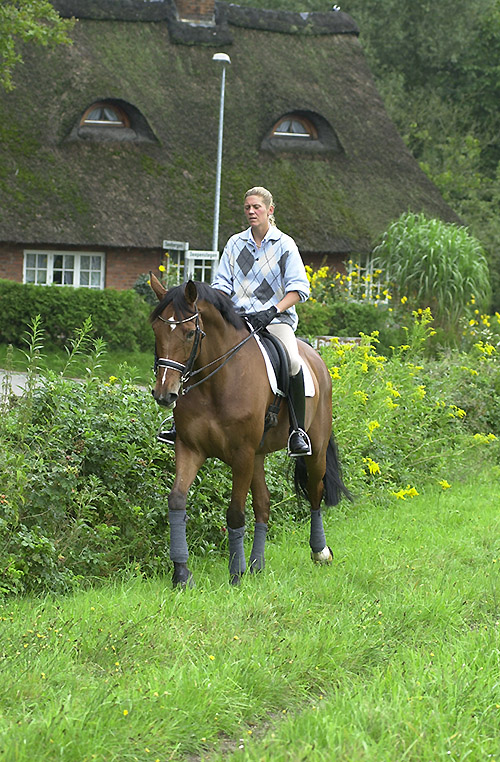
“Go outside and ride. That’s the best you can do. Some horses, they get tense in the indoor and it is easier out in the open. For some five year old horses, the simple flying change is difficult to keep a nice walk in between, they get a little tensed up, so again I do those changes outside.”
“With the medium walk I make sure they go in front with a long neck – the longer the neck, the further the shoulder can come out – and that they are still ‘busy’ behind in the medium walk.”
Do you think some riders are concentrating on young horse classes and forgetting about the aim of Grand Prix at the end?
“We should let the horses keep growing, they are still young, they are still playing around, they should still have their own personality. It should be with much more harmony, and not that the rider is pushing the horse into something. Even if the spectators don’t know anything about riding, it should look nice. Horses have to learn to relax if they are going to go on – the good horses in Grand Prix, like Farbenfroh, they can relax, when Nadine rides from the stable to the arena, they go on a long rein, nice and relaxed. It’s not out of the stable, put your head down, go go go. The horse is alive, it is not a machine.”
“I love to ride outside and they love it also. I have a little canter track and that’s what they really enjoy – to go trot, canter, some horses just walk on the track to relax. I have one very nervous horse, and with him I train a lot on the track, just playing around so that he is still listening to me. I have had him for more than a year now, but he didn’t learn the basic in the right way, he is a super mover, but it is still a big problem for him that he doesn’t understand me. I don’t work him so hard on the exercises in the indoor because he gets stressed, I try to do it on the track – now he is doing fifteen super one tempis, and I can go back to four tempis. One year ago, he was running away from me because he was so afraid of my legs when I asked for the one tempis.”
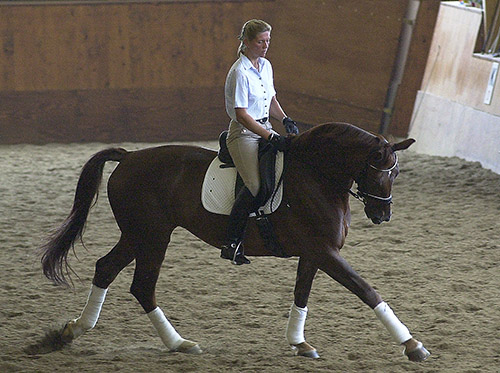
The Donnerhall mare what were you working on with her?
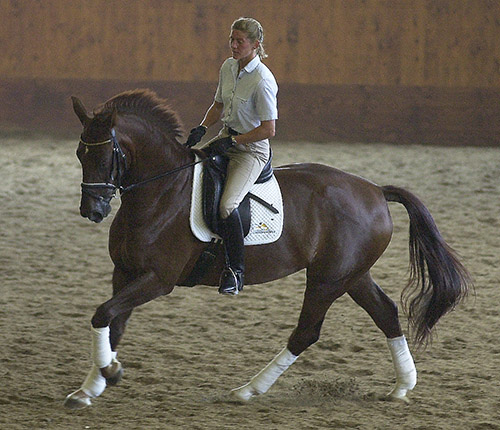
“I try to give her security. With her big movements she can hurt herself in the mouth, her hind legs are working so hard with such big movement, that she gets a little bit tense, then when you push her she comes into the bit. When you try walk-canter/canter-walk, she is always a little stopping on the bit, I haven’t really got her away from the inside rein and onto the outside rein – that’s what I am working on now.”
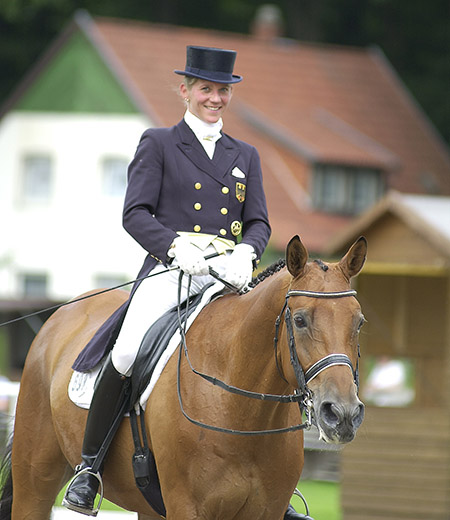
Is it still a challenge – do you enjoy working with the young horses?
“It is the biggest thing for me always in my life. You never stop learning. The young horses give you such a great feeling, sometimes I get on my young horse and it gives me such a fantastic feeling that I think maybe some more Grand Prix riders should ride young horses. Feeling them move through their body is so great, make a nice walk, a nice trot, a super canter, playing around, having fun with their lives. They become older very quickly, and then it is not just fun, it is real real hard work. I give them fun before that, and try to show them that they can work for me, and we can work together. I am a partner, not just a rider who gets on them. That is so much easier when you get the horse as a three year old, or much better, as a foal, it is the time when they form their minds, and if you can have this time with the horse, they always remember, it is really super…”
Breeding your own dressage star this season in Australia? Go to www.ihb.com.au and see the amazing range to top European stallions that are available… Here’s two proven champions BUT there’s many more including some new exciting options…
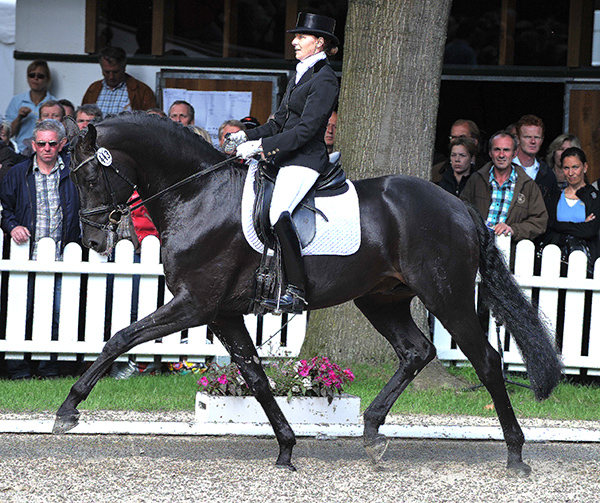
Fürstenball
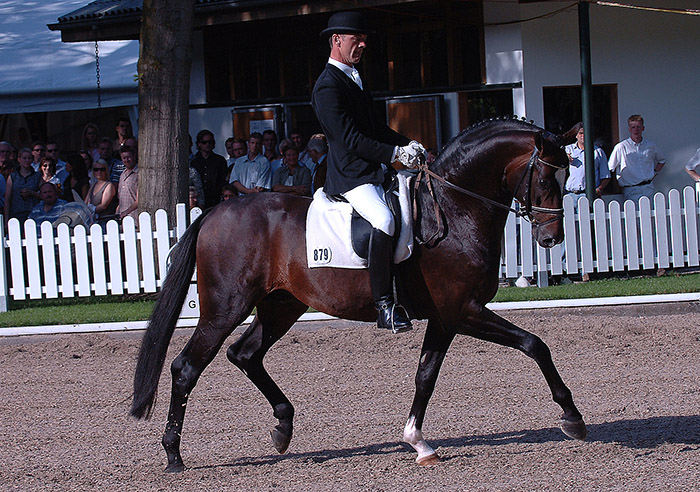
Sir Donnerhall


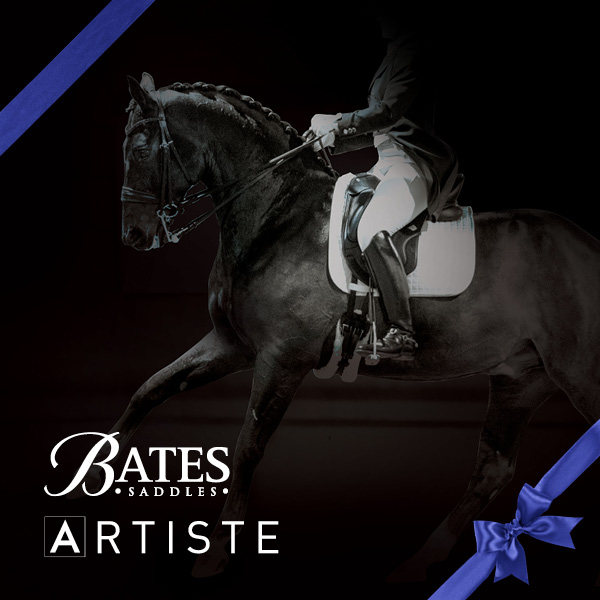
Hi thanks a lot for your advice it was so helpful for me . I have problems with my horse , I raid hem every day morning , after warm up for 10 minutes, I start daily work but after same loop and circles ! May horse not respond to may leg and lost his movement . Please help me with same exercise .
Thanks for your help and your advice. ……..